Spotlight on Rob Finch
Jan 15, 2012
Originally published 01/15/2012
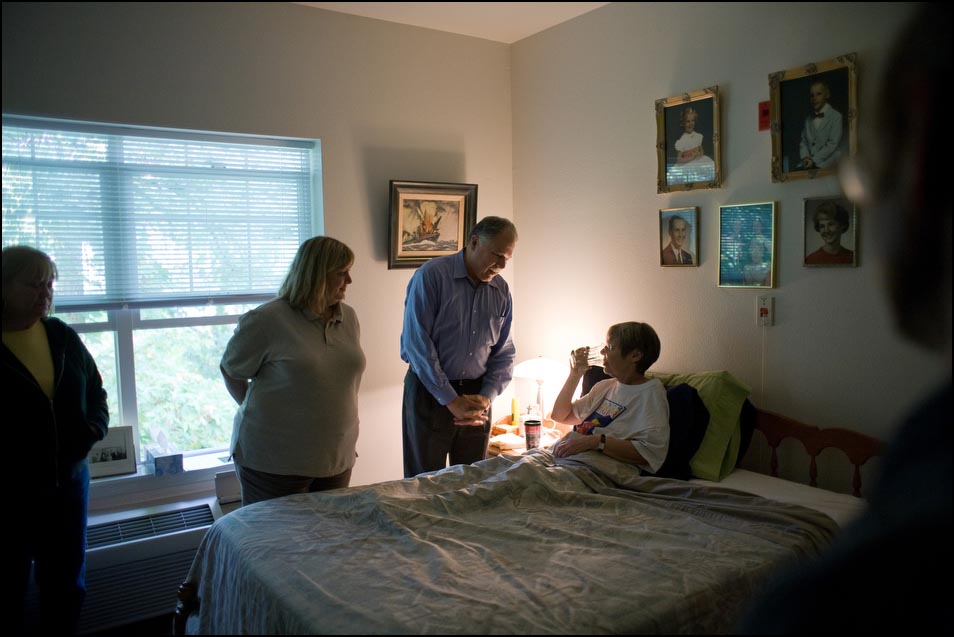
TID:
Thanks for sharing this picture, can you tell us a little about the background of it?
ROB:
This photo was one of the last pictures I made while reporting the story of Lovelle Svart. Lovelle had terminal lung cancer and ended her own life by drinking a lethal barbiturate in accordance with Oregon's Death with Dignity Act. This picture shows her drinking the solution.
TID:
This image is part of a larger story. Can you tell us what was the origin of the story, and how long you worked on it?
ROB:
This is a complicated story. I will try to be as concise as possible. Lovelle Svart was a researcher at The Oregonian. Due to a terminal lung cancer diagnosis, she left work four or five years earlier. Over the years, she kept in touch with folks at the paper, specifically Don Colburn, the reporter who wrote about end of life issues. Lovelle was a strong-willed person and held deep beliefs about Oregon's Death with Dignity Act.
Whenever the paper published news related to the issue, she would contact us with her thoughts. She always dreamed of writing a column, but it never happened. Early in 2007, she was told she had six months or less to live. When a patient receives this diagnosis, she is eligible for the Death with Dignity Act. Lovelle called Don and wanted him to know about it. Maybe it was time for that column? Don and I went to her tiny assisted living apartment to visit Lovelle. We didn't know what she wanted to do, what we wanted to do or even what we should do. But we wanted to at least go and talk with her about it. As soon as she started talking we knew we needed to do something. She was incredibly insightful and thoughtful about what it was like to live at the end of one's life. She was also very personable. We believed the community would benefit from being part of this conversation. Lovelle agreed.
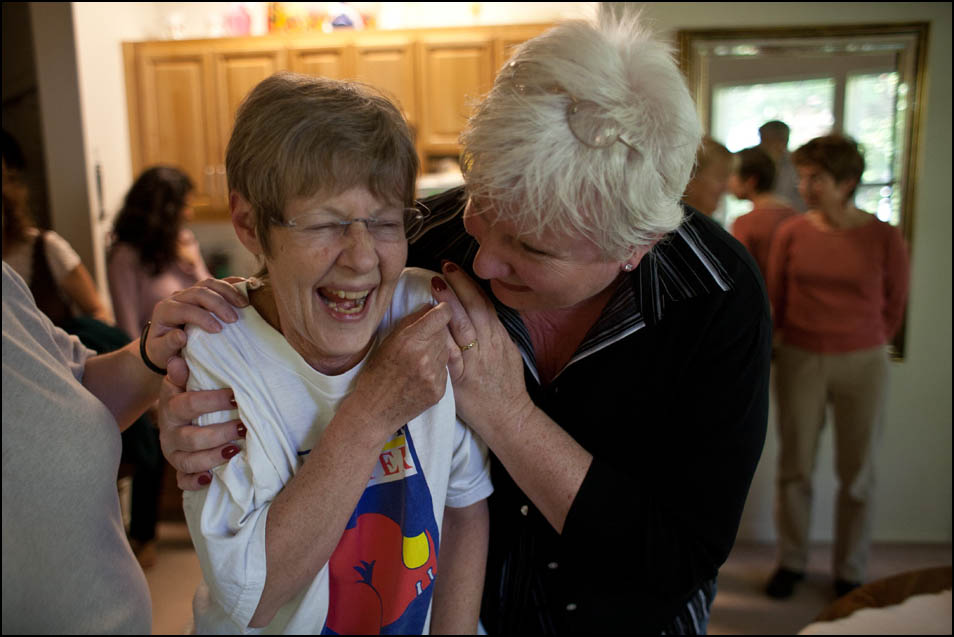
We felt the story was more than just a couple of columns in the newspaper. After meeting with our editor, we proposed a video diary. We wanted to give her a camera and let her record herself whenever she wanted. She preferred to have us do it. So we settled on a plan in which we'd visit with her once a week to record her thoughts. I would then take the footage, edit and post a short video about whatever subject she happened to be talking about. Don and I shared our thoughts but it was really up to her. We worked with Ed Madrid, a web designer at The Oregonian, to create a home for all these videos.
The most exciting thing about this approach was that we were basically telling a story close to real time. Of course, we knew it would end with her death, but we did not know what path she would take. She didn't know if she would use the lethal drugs or not. We were committed to publishing a story piece by piece, no matter what happened. This certainly was a departure from the style of storytelling we were used to – reporting for a long period of time, digesting the material, organizing it into one package and publishing. In terms of time, I believe we worked on the story for about 4 months. It ended when Lovelle ended her life.
TID:
How did you approach such an intimate story?
ROB:
Photography was an afterthought for this story. I was most concerned with facilitating the weekly interviews in which Lovelle shared her joys, fears, emotions and advice. Those sessions were some of the most intimate experiences I've ever had in journalism. On the other hand, most of the photography was really not that intimate at all. Lovelle was extremely protective of those around her. If you look at the other photography on the site, you'll see she is alone in most of the photographs. That is not really representative of her experience, but she was not comfortable introducing us to the other people in her life. That was her boundary.

I approached this story as I try to approach all stories. I try my best to respect the subject and be truthful to the experience. In this kind of immersive journalism, I believe it's important to make sure you are not pushing your own agenda of what you think the story "is." That's a dangerous trap, and one we often fall into. Preconceived notions of how a story will look at the end drive the news business everyday - especially in a time of diminished resources and time.
I believe following the story as it actually evolves makes your work more interesting than you could have imagined.
TID:
Ok, now onto the image itself. Tell us what led up to the moment at hand, and what was going on while you made the image.
ROB:
In this photograph, Lovelle is drinking the lethal barbiturate that will end her life. I am trying to make this photograph as unobtrusively as possible. I am damning the sound of the shutter – which sounds more like a boom than a click. I suppose I was tense. I did not know what was going to happen. Would she die immediately? Would she throw up? Would a family member try to stop her? Looking back, it still gives me chills. I have photographed death in many different situations – natural causes, epic acts of nature, violence – but this was a totally different experience. This was the actual act of a person ending her own life. I still have a hard time wrapping my mind around it.
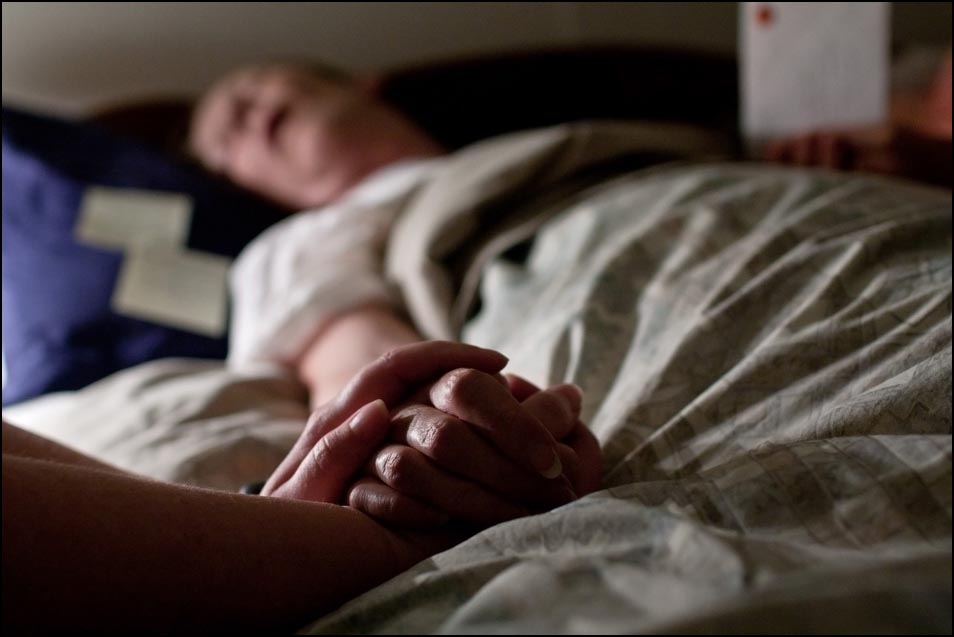
There was emotion as well. Lovelle had become a friend. I looked forward to our discussions. There was quite a lot of meaningful conversation when the video camera was turned off. There was a lot of sadness in my heart while I was making this picture. We all knew that Lovelle's death, either through her illness or ending her own life, would be the end of the story. Witnessing that moment was still hard. But you kinda just have to turn off those thoughts. If you don't, you are not doing justice to the story or the subject of that story.
As far as the details of making the picture – we all talk about trying to make photos, which speak to more than just what is happening in the frame. We try to make pictures about what something feels like. That was my goal with this picture. The room, Lovelle's mother's bedroom, is a significant portion of this photograph. I wanted viewers to spend time with the photos on the wall. This act is another chapter in a family's history. I think the dimmed light plays a part in this photograph, as well as the shadowy figures in the foreground. I wanted to make it clear that there were others in the room – many who did not want to be identified. Finally, I wanted to make a photo of the significant moment when Lovelle is drinking.
TID:
Was there any point of conflict or struggle during the making of this picture and how did you handle it?
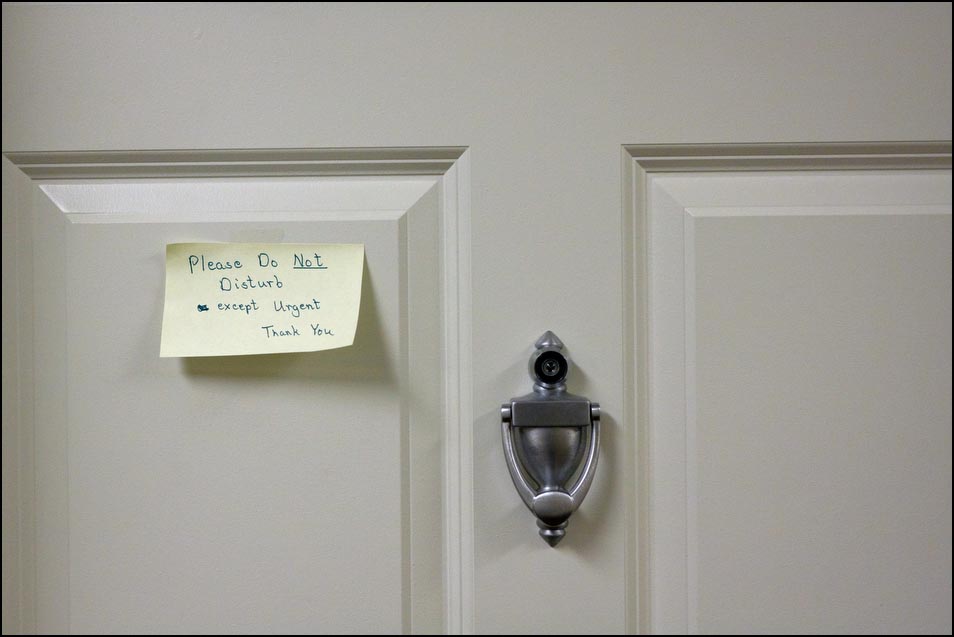
ROB:
There were no conflicts exactly, but it was not a comfortable situation. Many people in the room did not want to be photographed. Some were okay being photographed but not identified, etc. We've all been in those situations. I made absolutely sure I respected those wishes. The greatest challenge I felt was not letting my presence shape how people interacted with Lovelle. I was concerned that someone would not go and give her a hug or spend time with her because I was there. It took a lot of talking to get people to accept the fact that I would respect their wishes. Everything in this situation was a bit of a tightrope walk. If it were not for Lovelle's strong vocal wishes that Don and I were there, I don't think it would have happened.
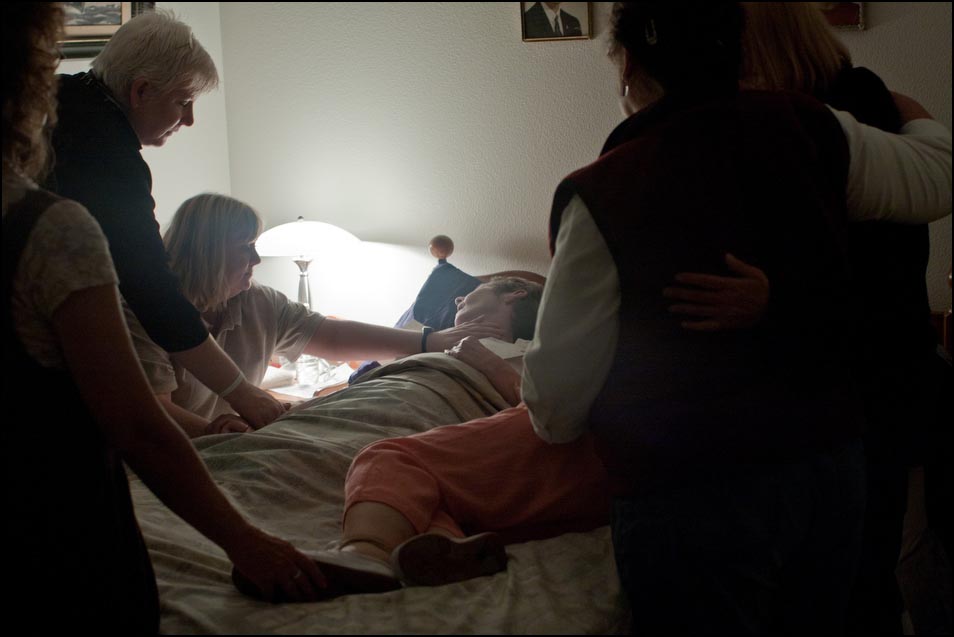
TID:
What was the reaction after the image was published?
ROB:
The reaction to the whole package was good. Almost every comment on the site was thoughtful. I know, that sounds crazy, right? But for whatever reason, this particular community was very respectful. I think that's because the site feels like diary and the videos feel like Lovelle is talking directly to the someone. At least I hope it feels like that, which was our intention. I think that feeling of intimacy makes it harder to be offensive. I think there were some letters to the editor, but I cannot remember any of them being outraged about the photo.
TID:
I'm sure this was a tough moment and story to work on. What lessons did you learn from this experience?
ROB:
I have already kinda touched on this, but I cannot reinforce it enough – do not force your own preconceived notions of what a story should be. Secondly, embrace complicated situations. I know that it's really hard to do, what with deadlines, shrinking budgets and more work. But it's very important not to try to make every story fit the same size and shape.
TID:
In conclusion, what advice (think mentally) do you have for photographers to put themselves in the position to make this type of powerful image?
ROB:
The reality of any intimate story is that you must give of yourself if you expect people to open up to you. It's simple advice but difficult to do. You are there because of your job. They are living their real life. If you are not empathic to them, you will never gain access to their lives. Those feelings must be real and genuine. You cannot fake it. Never think about your subjects as compositional elements. Respect them. Give of yourself. Treat them how you want to be treated. It's basic life stuff and they teach it in preschool.
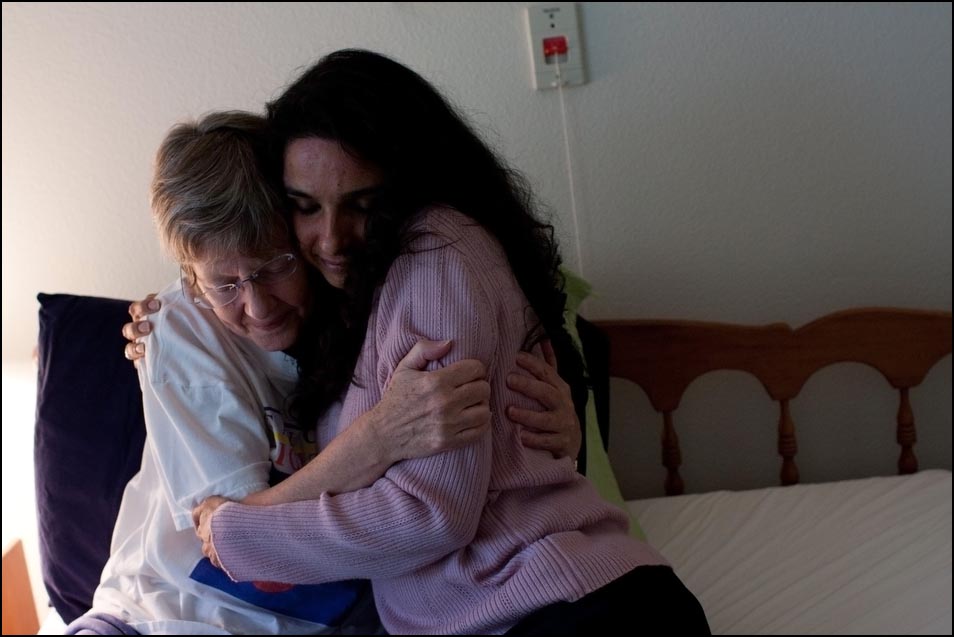
TID:
What did you learn about yourself from making the image(s)?
ROB:
The experience of spending hours with Lovelle, listening to her deepest emotions in the interviews, watching her dance the polka the day she died, struggling with the reality of her time left and finally ending her life… Those experiences are still with me and always will be. They are the payoff and the baggage of making the choice to be a photojournalist.
+++++

You can see more of his work here:
Peter Richardson's film, How to Die in Oregon:
+++
Next week, we'll deconstruct how Kyle Green made this stellar image.
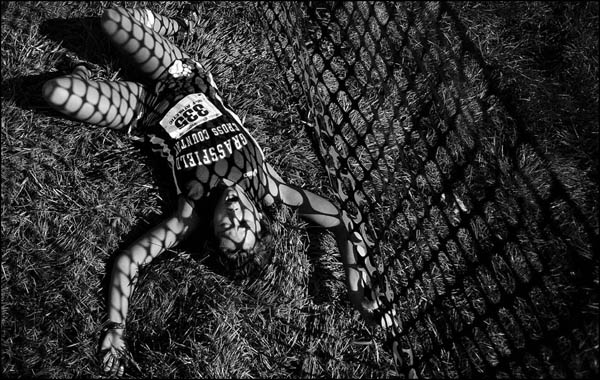
If you have any suggestions or if you want to interview someone
for the blog, contact Ross Taylor or Logan Mock-Bunting: